If you visit the Jepson Prairie Reserve near Vacaville-Dixon in Solano County, keep your eyes out for Andrena (mining) bees on the meadowfoam...
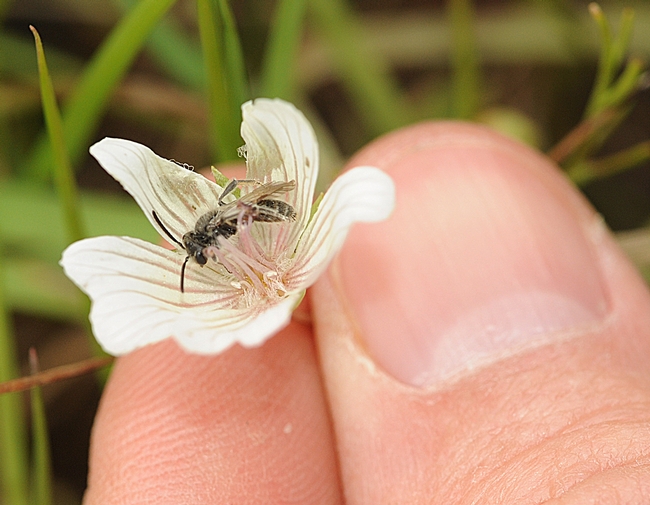
Andrena bee on meadowfoam. (Photo by Kathy Keatley Garvey)
Andrena bee on meadowfoam. (Photo by Kathy Keatley Garvey
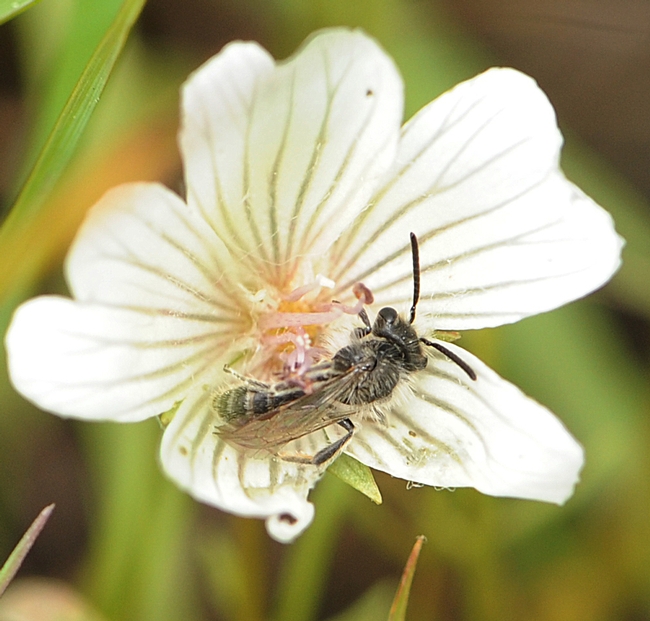
Andrena bee cradled inside a meadowfoam at the Jepson Prairie Reserve. (Photo by Kathy Keatley Garvey)
Andrena bee cradled inside a meadowfoam at th
Posted on
Tuesday, April 19, 2011 at
8:28 PM
At first I thought it was a yellow-faced bumble bee.
Sort of like applying the adage, "When all you have is a hammer, everything looks like a nail."...
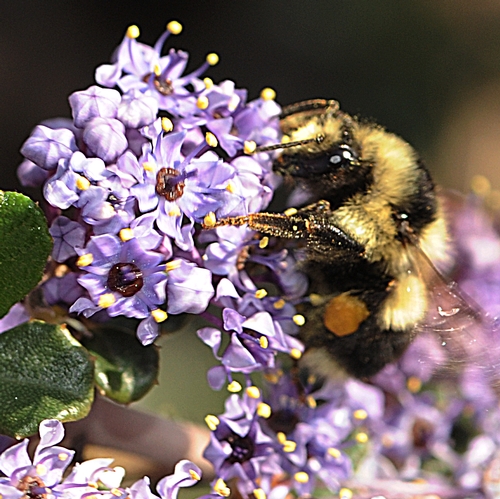
Black-Tail Bumble Bee
EARLY RISER--Black-tail bumble bee (Bombus melanopygus) forages at 9:30 a.m., Friday, March 4 in ceanothus at the Haagen-Dazs Honey Bee Haven at UC Davis. (Photo by Kathy Keatley Garvey)
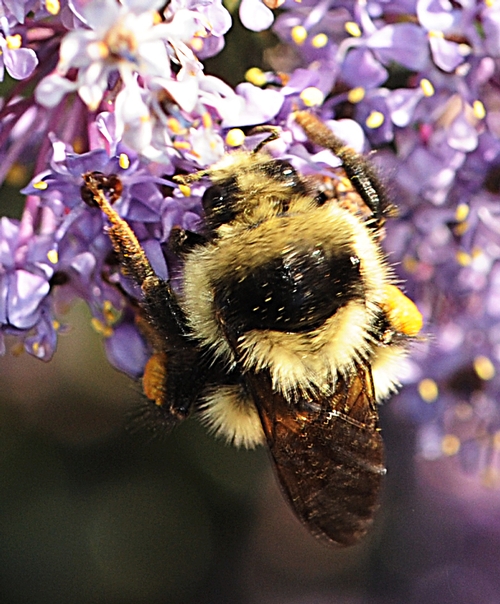
From the Top
FROM THE TOP--Black-tail bumble bee (Bombus melanopygus) sipping nectar from ceanothus. (Photo by Kathy Keatley Garvey)
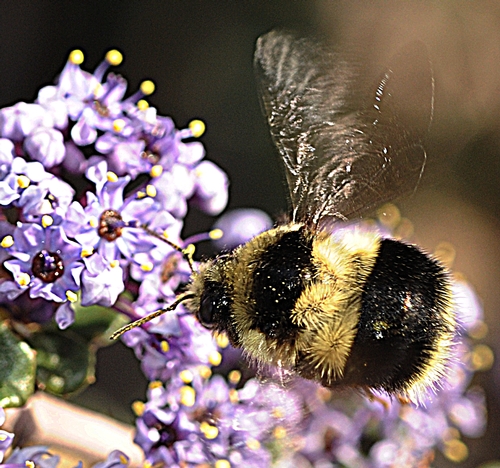
Buzzing Wings
BUZZING WINGS--Wings of black-tail bumble bee (Bombus melanopygus) beating rapidly. The Haagen-Dazs Honey Bee Haven, a half-acre bee friendly garden at the Harry H. Laidlaw Jr. Honey Bee Research Facility, Bee Biology Road, UC Davis, is open dawn to dusk. No admission is charged. (Photo by Kathy Keatley Garvey)
Posted on
Friday, March 4, 2011 at
8:28 PM
Some species of bumble bees are disappearing at an alarming rate.
And that, in itself, is alarming.
A three-year study published Jan. 3 in the...
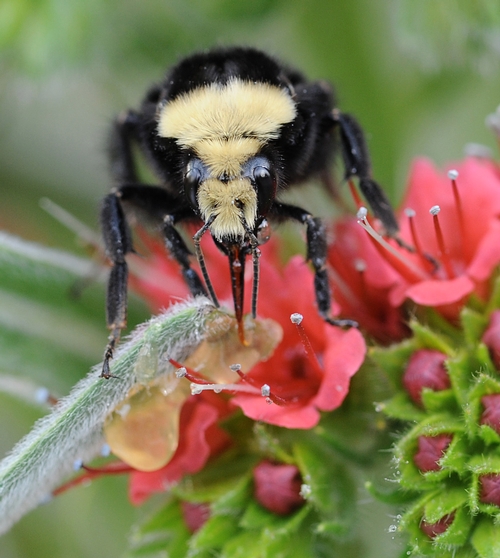
Yellow-Faced Bumble Bee
YELLOW-FACED BUMBLE BEE, Bombus vosnesenskii, gathers nectar from a tower of jewels. The Cameron study looked at three species of western bumble bees, including this species. (Photo by Kathy Keatley Garvey)
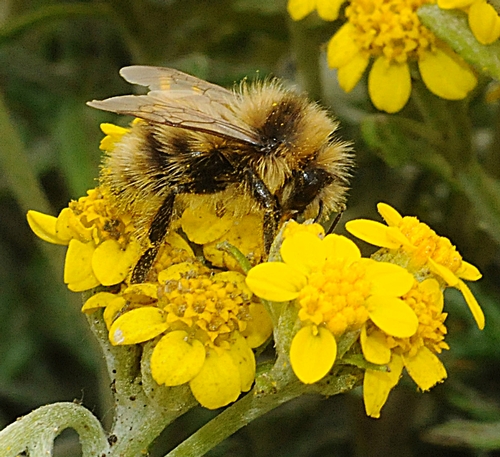
Bombus Bifarius
BOMBUS BIFARIUS, shown here at Bodega Bay, was one of three western species of bumble bees looked at in the Cameron study. Of the three, only B. occidentalis is in decline “and that one only in the western part of its range,” Robbin Thorp said. (Photo by Kathy Keatley Garvey)
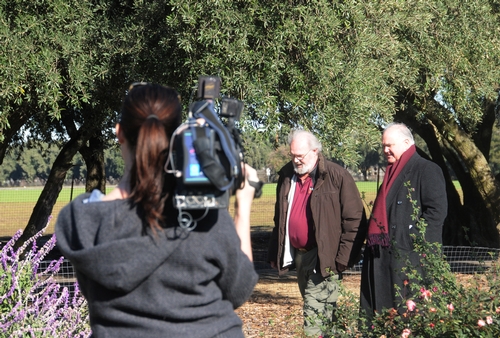
News Report
BUMBLE BEE EXPERT Robbin Thorp (center) discusses the declining bumble bee population with KTVU health and science editor John Fowler. Operating the camera is Erica Hintergardt. (Photo by Kathy Keatley Garvey)
Posted on
Tuesday, January 4, 2011 at
9:08 PM
Glory bee.
There are more than just honey bees in the Häagen-Dazs Honey Bee Haven.
Think butterflies, dragonflies, sweat bees, metallic sweat bees,...
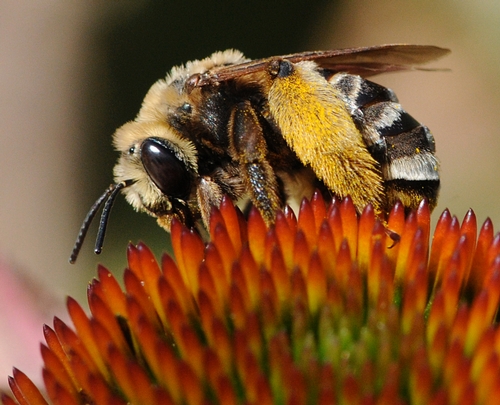
Bee on a coneflower
THIS BEE, a Svastra obliqua expurgata, forages on a purple coneflower in the Häagen-Dazs Honey Bee Haven. Native pollinator specialist Robbin Thorp, emeritus professor of entomology, is monitoring the many species of bees in the garden. To date: more than 50 over the last two years. (Photo by Kathy Keatley Garvey)

Carpenter Bee
CARPENTER BEE, a female Xylocopa varipuncta, on a black-eyed Susan planted in the Haagen-Dazs Honey Bee Haven. (Photo by Kathy Keatley Garvey)

Tachinid Fly
TACHINID FLY at work in the Haagen-Dazs Honey Bee Haven. Tachinids parasitize other insects, especially caterpillars, beetle grubs and others, notes UC Davis native pollinator specialist Robbin Thorp, emeritus professor of entomology. (Photo by Kathy Keatley Garvey)
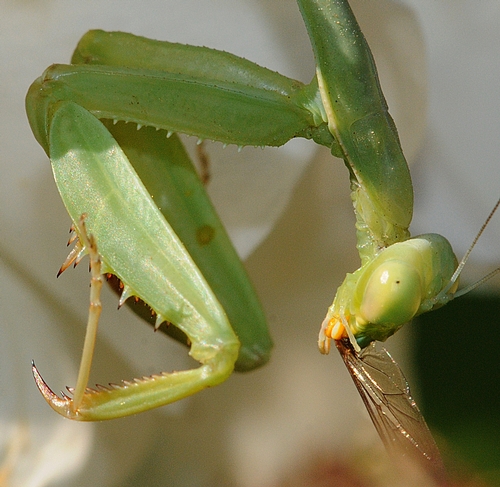
Chomp, Chomp
YOU'RE LIKELY to encounter a praying mantis in the Haagen-Dazs Honey Bee Haven. This praying mantis is polishing off a winged critter. (Photo by Kathy Keatley Garvey)
Posted on
Friday, September 10, 2010 at
8:34 PM
When this insect flashes by you in your garden, at first glance you think: "Yellow jacket? Paper wasp? What's that?" Then it lands and you realize...

Female carder bees
CAUGHT IN FLIGHT, a female carder bee heads for saliva blossom--but it's occupied by another female carder bee. (Photo by Kathy Keatley Garvey)
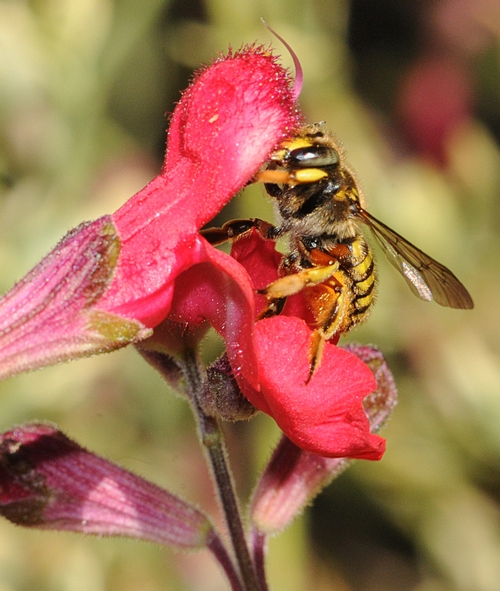
Sipping Nectar
CARDER BEE sips nectar from a salvia blossom. (Photo by Kathy Keatley Garvey)
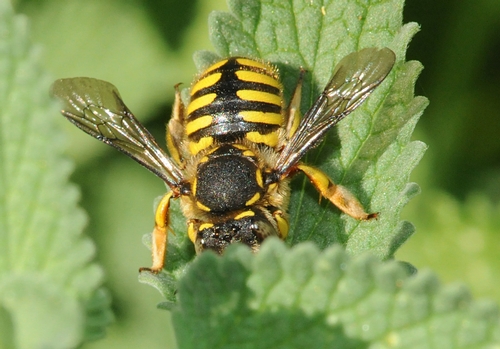
Carding
THE CARDER BEE is so named because it gathers "down" or "fuzz" from leaves to build its nest. (Photo by Kathy Keatley Garvey)
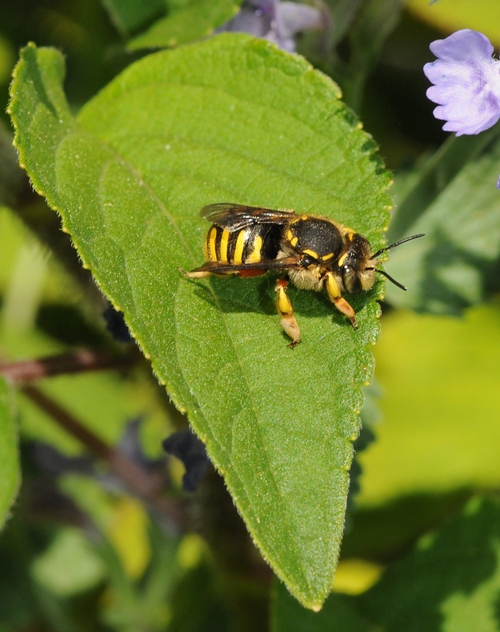
The Evidence
THE LEAF of a catmint (see upper right hand corner) shows evidence of carding. Carder bees remove the fuzz or down to build their nests. (Photo by Kathy Keatley Garvey)

Love on a Catmint
MATING--A male carder bee (top) finally catches up to a female. (Photo by Kathy Keatley Garvey)
Posted on
Monday, August 23, 2010 at
8:26 PM


















